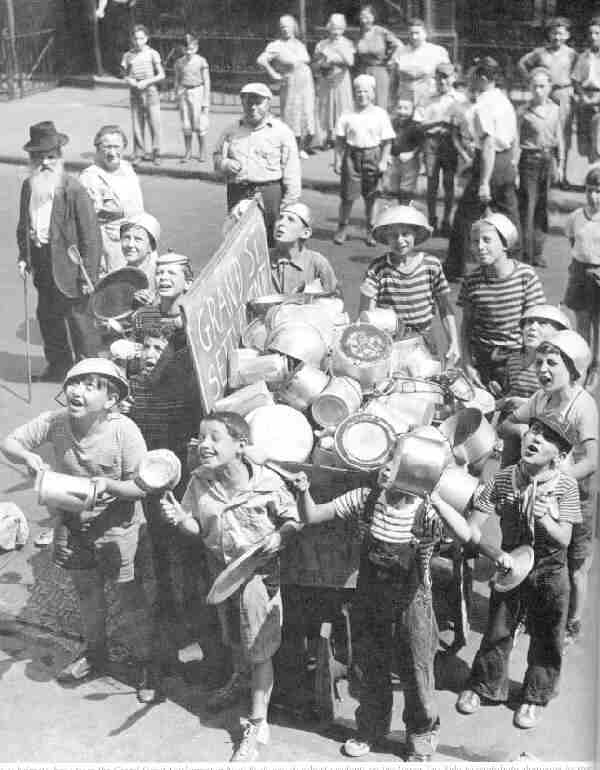The Arsenal of Democracy: Conservation and Recycling
The U.S. Government after Pear Harbor asked Americans to salvage and collect a long list of materials that coud be used for the war effort. The materials included paper, aluminum, tin, iron and steel, rubber, silk stockings, and cooking fat. Some of these materiald like rubber and silk were needed because th Japanese had cut off the supplu by their rapid advance through Southeast Asia. The Government organized a major conservation and recycling effort. Cities and states were given quotas. Children and their families were involved with conservation and recycling of goods. Many children participated scrap metal, used tire, and paper drives to collect materials iseful to the war effort. Contests were held to meet established quotas. Newspapers reported on the quantities of material collected. Some comapnies sponsored drives and offered prizes. Given the need for alumininum for aircraft production, drives were launched for old pots. As the Japanese cut off America from sources of raw rubber, drives were launched for old tires. Children would even brought their own old toys in for scrap drives. At that time toys were much more likely to be made from metal than in our plastic society today. While these activities and drives were very widely publicized, we are not sure just how useful the amterials collected actually were. We have not yet found any definative studies indicating the actual value of these drives. We suspect that drives for aluninum and rubber in 1942 may have been especially important as the United States was just beginning to gear up production.
Pearl Harbor (Devember 1941)
Americans were reluctant partivcipants in World War II. Many opposed American participation. NAZI brutalities in Europe, especially the Blitz on London changed many binds, but many continued to oppose American participation. The Jappanese carrier strike on Pearl Harbor instantaneouusly changed the minds of virtually every American. The nature of the attack convinced Amretricans that the time had come to fight. Creating a national consenus. Most Americans including women and children not involved in the fighting wanted to partivcipate the war effort. One way that was expressed was in scrap drives.
Materials
The U.S. Government after Pear Harbor asked Americans to salvage and collect a long list of materials that coud be used for the war effort. The materials included paper, aluminum, copper, iron and steel, tin, rubber, silk stockings, and cooking fat. Some of these materials like rubber and silk were needed because the Japanese had cut off the supply by their rapid advance through Southeast Asia. Given the need for alumininum for aircraft production, drives were launched for old pots. One of the most serious raw material crises was rubber. The Japanese offensive in the first months of the War seized Southeat Asia which had been the major supplier of rubber. Government action requisitioned nearly the entire stock of rubber and tires. It became virtully impossible to buy tires--including bicycle and tricycle tires. Drives were launched for old tires. Major efforts were also made to expand production in Brazil and West Africa. In the end the problem was resolved by a crash progeam to create an entire new industry--synthetic rubber. Another interesting material was cooking fat. This might not seem like a critical national material. There are, however, many industrial uses for fats. Fat is the a base for soap. Coconut oil and palm oil are probably the most important oils used for sop, but other fats can be used as well. Fats are also used to produce candles, paints, varnishes, leather, artificial rubber, polishes, waxes, carbon paper, salves, insecticides, lubricants, cosmetics, drugs, dyes, petroleum, and synthetic resin. The reason for the drives for cooking fat, especially du ring the early phase of the war, was that glycerin in fat is an key ingredient in explosives.
Collection Efforts
The Government organized a major conservation and recycling effort. Cities and states were given quotas. Children and their families were involved with conservation and recycling of goods.


No comments:
Post a Comment